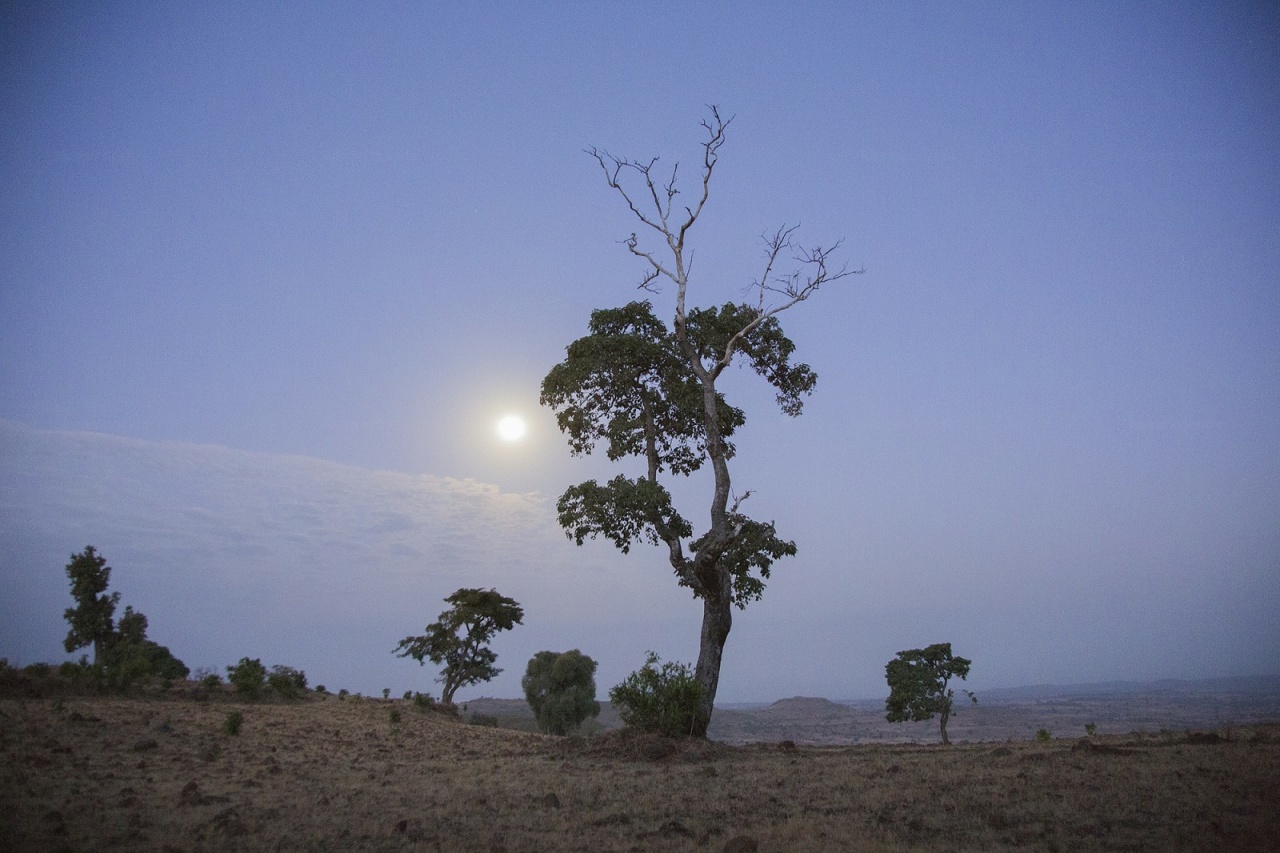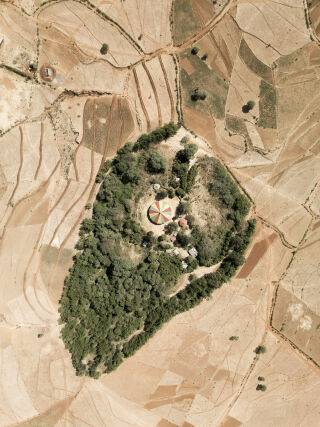
Hierotopia



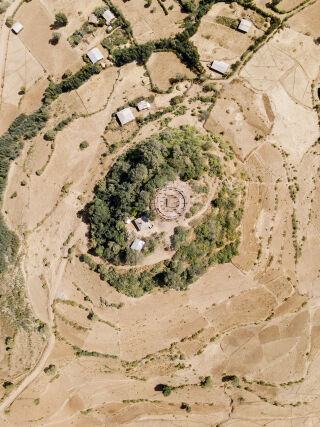


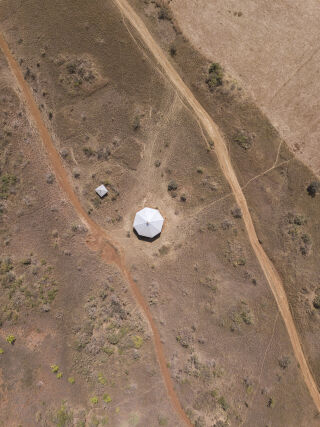
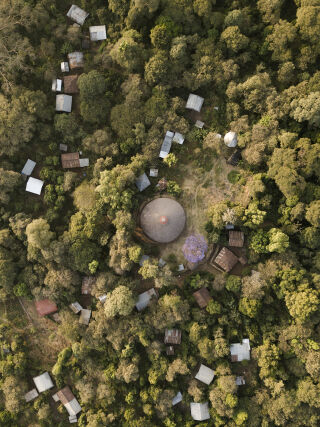
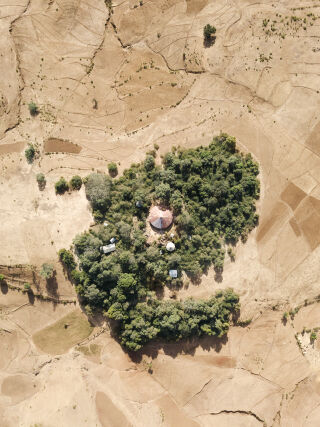
Hierotopy, from the Ancient Greek for ‘sacred’ and ‘place’, is the study of the relationship between objects within Byzantine churches as they seek to display invisible realities. The forests surrounding Ethiopia’s Orthodox Tewahedo churches have a similar function to other physical objects within the church building, such as the murals and icons and incense, directing the worshipper to look beyond what is visible.

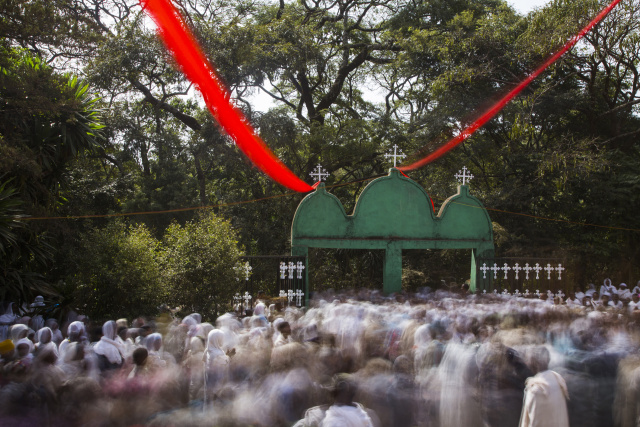
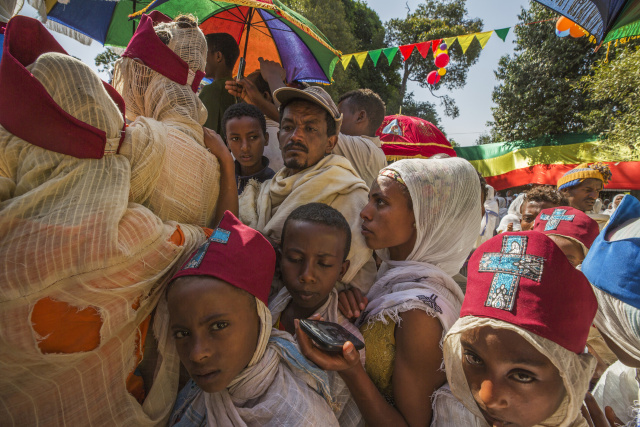
To its guardians, each forest resembles a miniature Garden of Eden and is essential to the dignity of the building. One priest I met described the trees as being the ‘the clothes of the church’.
In Genesis 1 and 2, the writer displays God’s transcendence (God up there) and his imminence (God down here), from which the whole story unfolds, with these two aspects held in tension. I mirrored these perspectives in my work: seen from above, these forests are demarcated by the stark boundary between sacred and secular, church and field. On the ground, generations come and go in a ghost-like mist under the same canopy of ancient trees as their ancestors. The trees stand as more enduring witnesses to our brief existence. The air inside the forests is cool, fragrant and filled with a cacophony of life. This is in stark contrast to the arid silence of the surrounding land which is feeling the strain of centuries of human activity and agriculture. The churches and their surrounding trees are not detached from daily life but central to it, informing human work and relationships within society.
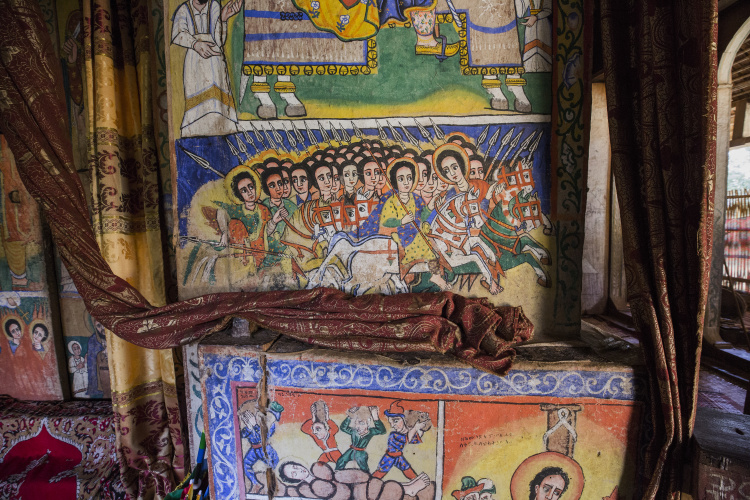
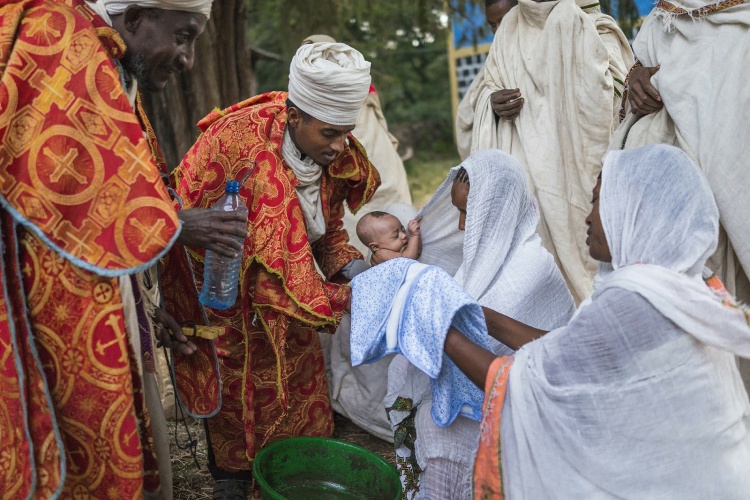
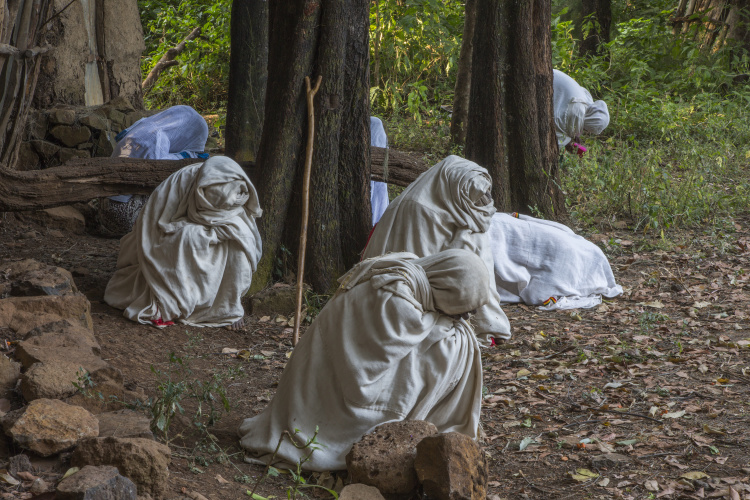
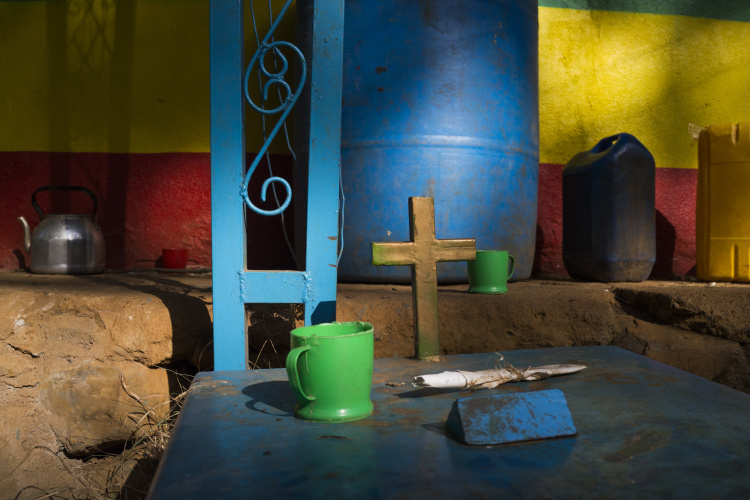
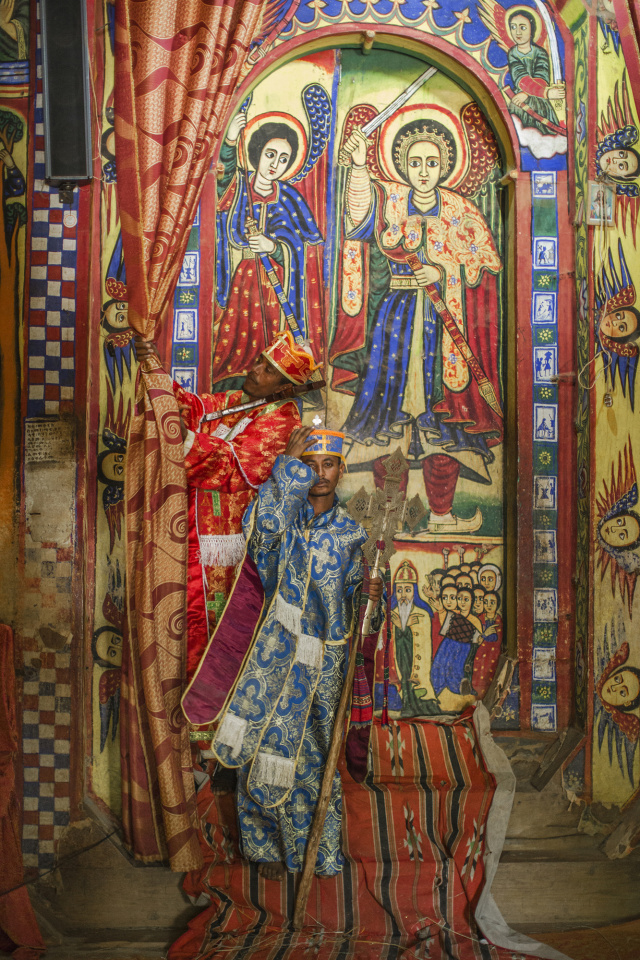
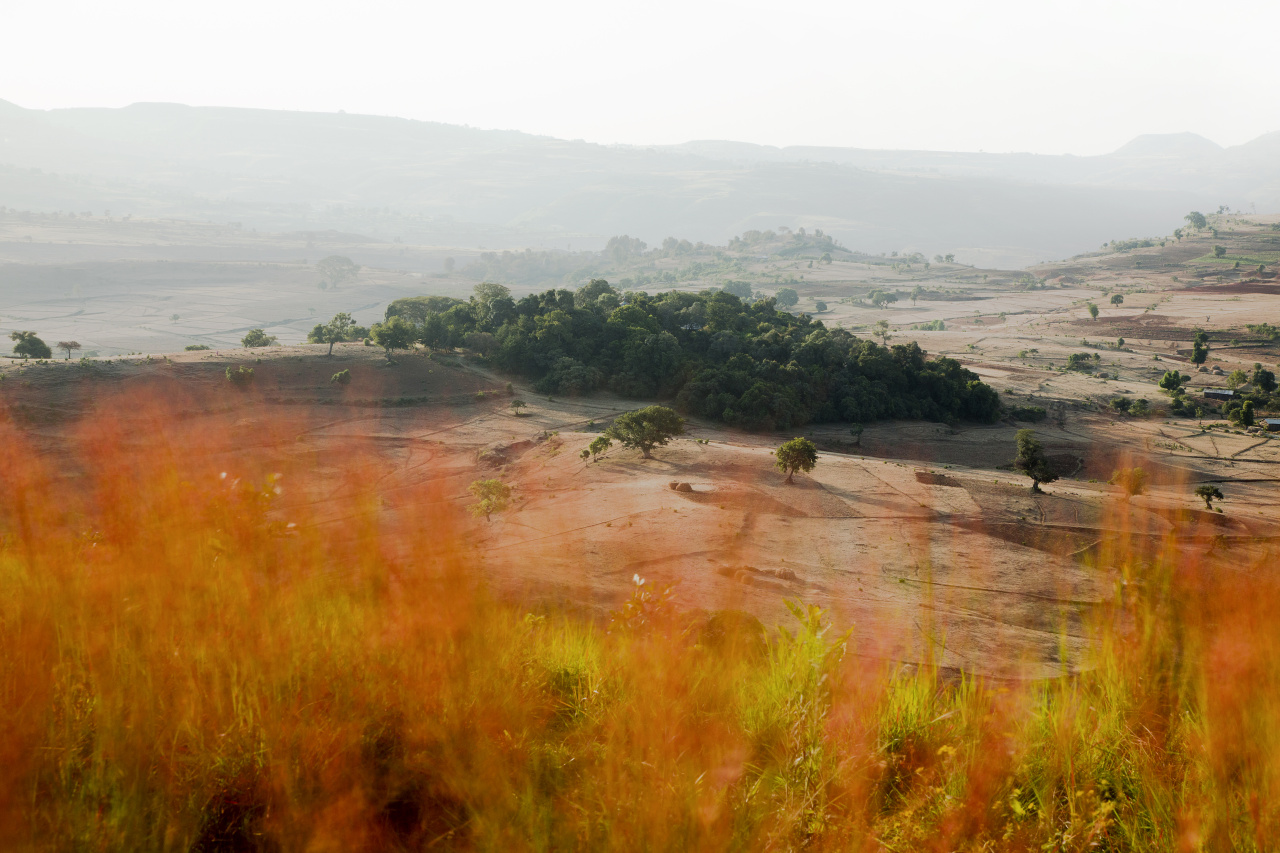
The photograph ‘Abune Kudis’ displays this new life. The pressure of a growing population has seen a new church building planted in the landscape, and the community has given this land to provide the church’s clothes: a new forest canopy. A symbol once again of new life being planted in an arid land, trees that will one day bear their fruit in season.
The religious significance of the forest is equalled by its ecological function, impacting beneficially on ecosystems far beyond its walled boundary. These sacred oases raise water tables, cool temperatures, block destructive winds and are home to yield-boosting pollinators that are essential to surrounding agriculture. These forests are genetic repositories which are vital for the future survival of human life in Ethiopia, and priests who fail to protect these natural resources are deemed to have failed their mission.
In Ethiopia these biological treasures have endured the rushing tide of global change but are under increasing pressure today. The church’s resolve has not lessened; indeed the priests become more committed to the cause when they discover the global importance of the forest they guard. For now the task is to strengthen what remains by the simplest solution possible – building a conservation wall that keeps grazing cattle out and allows vegetation to regrow.
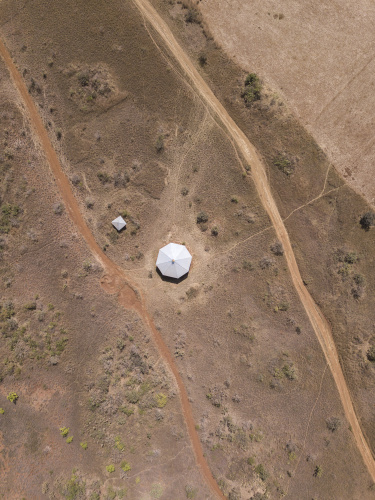

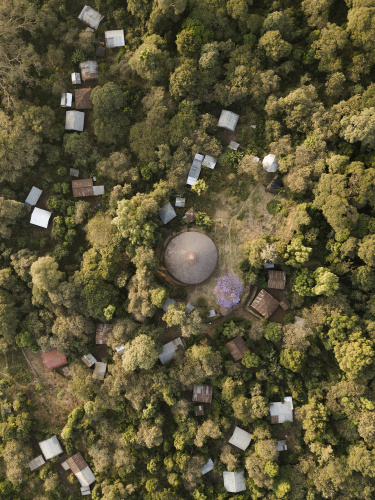
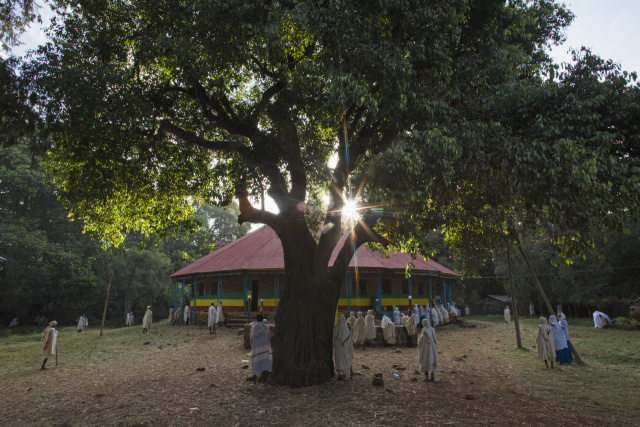
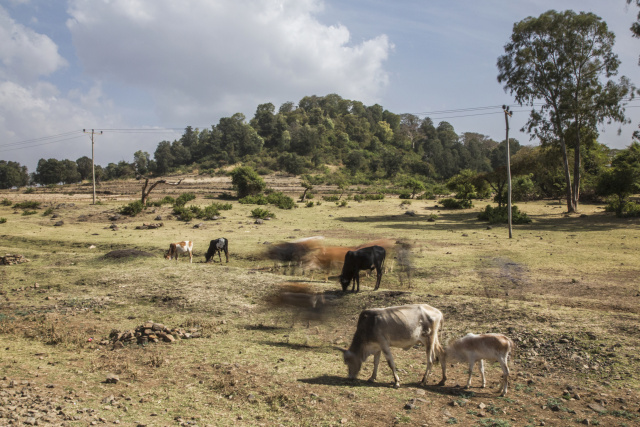
The Anthropocene age is defined by the mass extinction of species because of human activity, and the momentum seems unstoppable. Each extinction story begins with the arrival of a new people or technology that creates more efficient ways to denude the abundant riches of the environment. Razed forest and polluted seas are the summation of a thousand individual decisions based on beliefs of what we deem to be valuable. Consumption drives our economies and is a core tenet of market economics. And yet, there are deeper emotions that power our lives, linked to the question of existence and destiny. In theory, the core Christian belief in stewardship for the environment is a powerful concept and, if applied globally by people who are at least nominally Christian, could transform the world for better.
